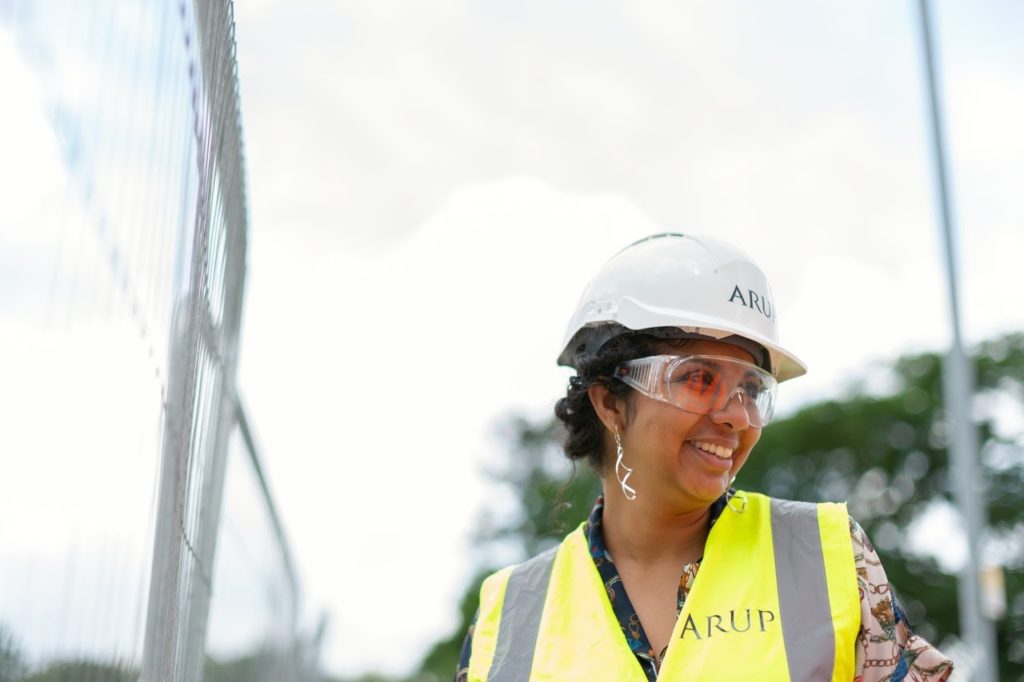According to the Bureau of Labor Statistics, women made up only 10.3% of the construction industry professionals in 2020. This number gets significantly smaller when you look at women doing work on construction sites: just 1%. The remaining 9.3% worked in an office setting.
Despite these differences, some companies have taken steps to make the industry more accessible to female tradespeople.
Gender Inequality in Construction
From the statistics above, it is clear that there is significant gender inequality in the construction industry — but what are the reasons for this?
Here are some of the most common issues making this industry inaccessible to female job applicants.
- Stereotypes about the construction industry. The construction industry is still quintessentially male in most people’s minds. Part of the reason for this is that men are physically larger, so the prevailing assumption is that they are more suited for physical work. Understandably, this discourages women from aspiring to work in such environments. This view is outdated, as much of construction has become mechanized and automated, making physical strength and size irrelevant. However, the perception persists.
- Lack of encouragement from parents, teachers, and peers. Parents rarely encourage their daughters to aim for a career in the construction industry. They perpetuate stereotypes that naturally discourage women from wanting to enter this profession. Another issue is the perceived lack of flexibility in the industry. Parents and teachers may steer female students away from construction because they think it does not offer a chance for advancement and career development.
- Gender discrimination in the industry. As mentioned earlier, the construction industry suffers from severe gender inequality. Most of the workers on building sites are male, and this can have implications for how women get treated at these sites. Because they are in the minority, women may fear harassment or sexism on construction sites. The fear itself may discourage them from entering the industry.
Statistics of Women in Construction
In 2020, according to the BLS data cited above, women represented about 10.3% of the construction industry. 86.7% of these women are in office positions, with just 2.5% of tradespeople being female:
- 45% of women in the construction industry are in sales and office positions.
- 31% are in management.
- 21% are in maintenance.
- 1.4% are truck drivers.
There is also a gender pay gap in the construction industry. At first glance, it does not look remarkable. Women in the construction industry in the U.S. earn 99.1% of what men earn. However, upon closer inspection, serious systemic inconsistencies are revealed. For example:
- African American women earn just 81 cents per dollar paid to white men in the construction industry.
- Latinx women earn just 72.3% of what Latinx men make and 53.3% of what white men earn in the industry.
The Bureau of Labor Statistics does show some positive trends. While women owned only 13% of construction firms, there was a 64% increase in female owners in the five years from 2014 to 2019. Furthermore, 9% of these women-owned construction firms earned at least $500,000, compared to the industry average of 8%.
Challenges Faced by Women in Construction
Despite some companies’ best efforts, women in the industry still face significant challenges. Here are some common examples.
- The construction industry is male-dominated. Despite many construction companies’ efforts to hire more women, the industry as a whole is still heavily male-dominated. It’s quite common for a woman to find herself as the only female on a construction site.
- Lift requirements and machinery made for men. There are aspects of construction that require physical strength, making them more suitable for those who can do heavy lifting. As a result, many job descriptions have so-called “lift requirements.” These restrictions are necessary for safety reasons, but they have the unwanted side effect of excluding some women. The good news is that jobs with lift requirements are only a small portion of the total available positions.
- Sexual harassment. When on a worksite, rules of etiquette may not be followed, leading to uncomfortable and inappropriate (or even outright harassing) things being said to or about the women at the site.
- Shared toilets. Construction worksites may not be used to having women on site. They may have shared bathrooms, locker rooms, or other facilities that only consider men.
- Ill-fitting safety equipment. Most safety equipment needs to fit snuggly to be effective. However, in a male-dominated site, most such apparel and gear will be in men’s sizes, leaving women with oversized equipment that hinders their ability to do work comfortably and accurately.
Benefits of Women in Construction
Despite all the challenges women in the construction industry face, there are many demonstrable benefits of hiring female workers. For starters, it makes your business more profitable and competitive. A report by McKinsey & Co. found that gender-diverse companies were 25% more likely to achieve higher-than-average profitability.
Furthermore, construction companies with more female line executives than staff executives had higher than average financial performance than those that didn’t.
This data shows that there is a financial incentive for having more women in trade and leadership roles in the construction industry.
How to Bring More Women Into the Industry
So how do we get more women to join the construction industry? Below are a few strategies that could help the effort.
Avoid Unsafe Work Environments
While lifting requirements will continue to be a deterrent for women looking to get into construction, companies can switch to heavy machinery to reduce that gap. The effective operation of heavy machinery does not depend on the gender of the operator. Furthermore, companies can make an effort to provide fitting work clothes and safety equipment in women’s sizes.
Construction companies can enhance the safety of their workers, both male and female, by getting contractor insurance. There are many types of insurance for construction companies, including general liability insurance. However, the most important for protecting employees is workers’ compensation insurance.
Confront Unconscious Bias in Recruitment
As mentioned earlier, there are stereotypes and perceptions of the construction industry ingrained in society. As a result, recruiters may hold a subconscious bias when hiring in the construction industry.
Companies can do their best to fight such biases if they plan to employ more women. There should be more women in recruitment teams, and diversity lessons should be a part of training at all construction companies. These steps can help employees become aware of their biases.
Provide Family-Friendly Work Policies
Construction companies can attract women to the workplace by having family-friendly work policies. These policies are essential for women as they make for a more inclusive and secure workplace. Some such policies include the following:
- Flexible time policies can allow employees with families to work around their family obligations.
- Job sharing can also help to relieve some of the demands of work on women. Job sharing involves two or more employees sharing a position, allowing one to step in for the other when familial obligations and situations arise.
- Maternity, paternity, and parental leave should also be part of employee benefit packages. These allow employees to take time away to fulfill family obligations without worrying about losing their jobs.
- Tuition for employee education helps women improve their skills and, consequently, their promotion prospects. Training and promoting from within are hallmarks of a successful company.

